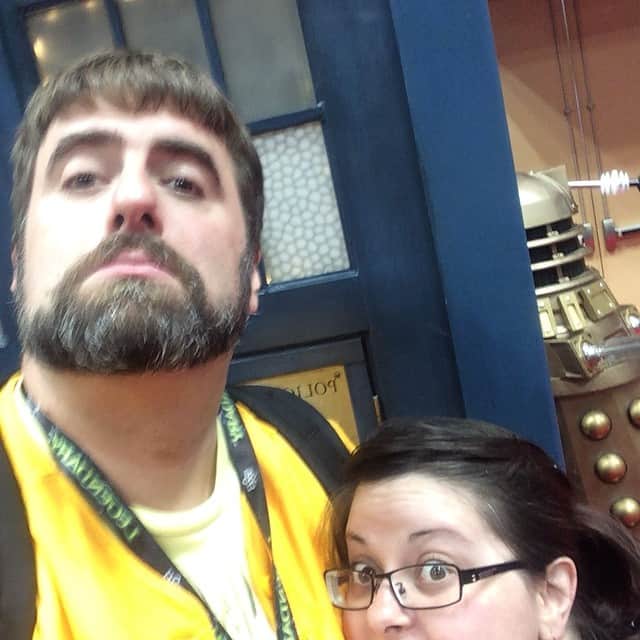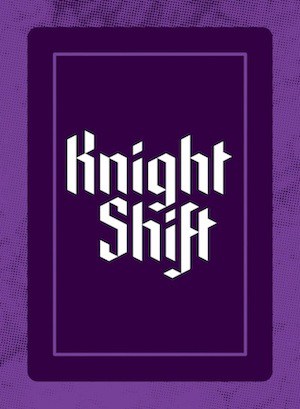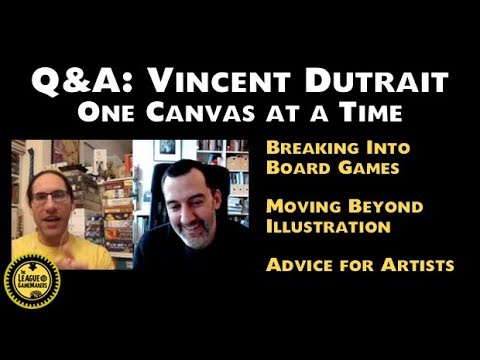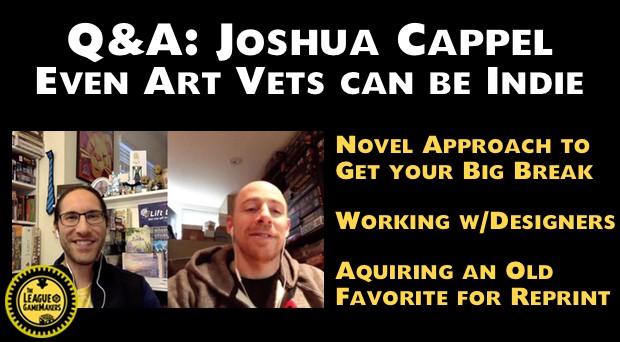
Guest Post by Jasmine Davis. Jasmine Davis is a writer and game designer in Pittsburgh, PA. You can find Jasmine’s own thoughts on her website, read her thoughts on other people’s games at Play Unplugged, or check out her latest designs at PlayPBJ.com. You can also follow her on Twitter – she’s @athingforjaz.
My fiancé, Pete, and I have totally different work styles. He’s a “slow burn” type of designer, thinking about an idea or concept and then finally putting it to paper. I’m more of a “popcorn” designer, coming up with a million and one ideas, working on each one for a few hours, then moving onto the next hotness. These traits make us a great pair in a relationship. I get things started, and he runs with them – but in the beginning, it didn’t seem that this would work so well in the world of game design.
WHAT BROUGHT US TOGETHER AS DESIGNERS IS OUR MUTUAL FONDNESS FOR SILLY TITLES.
We finally started working together on a game that I began designing alone, Knight Shift. We’d been acting as one another’s sounding boards for several months, so it felt really natural to take that to the next level and formalize our relationship…as game design partners.
HERE’S WHY DESIGNING WITH YOUR PARTNER IS GREAT:
- It helps you recognize your own strengths. You have to be seriously honest with yourself about what it is you do well and where you need help.
- It helps you recognize their strengths. Conversely, knowing what your partner is good at – and letting them run with it – is awesome both in game design and in life.
- The project can always be worked on – even if one of you doesn’t have the motivation.
- It gives you something to talk about on long car rides. I call them my “car ride ideas”. They’re the crazy games that I come up with on really, really long car rides. One of You Is a Bear started as a car ride idea.
SUNSHINE AND ROSES
We’ve learned a thing or two about working together since we got started. It turns out that designing a game with your partner isn’t all sunshine and roses.
You’ll disagree on some key elements and probably get a little mad at each other. You’ll accidentally step on each other’s toes. But you’ll also come up with amazing ideas that totally exceed what either of you can do on your own.
WORKING WITH YOUR PARTNER: WHAT WE’VE LEARNED SO FAR
DECIDE WHO’S GOING TO DO WHAT, BEFORE YOU ACTUALLY DO IT.
This is key in any partnership, but especially when you’re designing a game with your significant other. If one partner starts reaching out to publishers while you’re still putting together a playtest group, Houston, you have a problem. It’s so important to make sure you’re on the same page from day one.
For instance, Pete is a prolific writer. When I ask him to write 500 words, he’ll write 2000 and gladly. I’m an ace editor, but distilling 2000 words back into 500 is basically rewriting. We learned that one the hard way. The new rule is that I’m the writer, and Pete edits and shapes. He takes my words and makes them funny, and I don’t have to come up with a one-word synonym for his ten-word sentence.
DECIDE WHAT TO DO WHEN YOU DISAGREE ON SOMETHING, BECAUSE YOU WILL.
Disagreeing on game design is different from fighting over who does the dishes. At the end of the day, the dishes will get done, but in game design, it’s like the dishes got done…because the kitchen was remodelled.
Pete and I got asked to submit Knight Shift to a publisher – one we’re actually really excited about and we feel would be a good fit. We were simultaneously starting a major revision, one that wouldn’t be ready for several months. Should we send it now, strike while the iron is hot, and let their developers handle critiquing it? Or should we hold off for a few months, rework the game, and send later? We settled on a middle ground (send as is, include a one-sheet about some changes that we might make, then pursue those changes while it’s being reviewed, just in case). However, that middle ground took us an awful lot of time to arrive at. We’re not skilled fighters, but we did try to save our discussions for specific game design time – a feat which made all the difference.
KEEP NOTES, PREFERABLY IN ONE PLACE.
You type ‘em, she writes ‘em out. One of you is a dry erase fanatic and the other hoards Sharpies. But you’ll have to keep notes somehow. And trust me, you should keep them in one place.
Our notes for Knight Shift are currently located in our two design notebooks, on Google Docs, in a Dropbox folder, in my email, on Facebook chat, and probably a few dozen other places. Write them wherever you want, just make sure they wind up in one place.
CONTINUE TO WORK ON YOUR OWN PROJECTS
I’m a firm believer in working on lots of different stuff at once – but especially when you’re codesigning something with your partner. You’re going to want space from the project and from your work on it. There’s no better way to stay creative than to work on your own stuff.
When we were getting Knight Shift ready for Tabletop Deathmatch, we decided that we’d also pitch some games in Publisher Speed Dating. We each picked our own game (for me, Cool Table, for him, Abomination!). We were solely responsible for that game – getting it ready, making sell sheets, ensuring all the meeples made it into the car. Having that lie entirely on me gave me a place to focus when Knight Shift got a little intense.
BRINGING YOUR PARTNER IN
Now that I’ve done it, I totally get why people design games with their partners. The games Pete and I make together are amazing and silly and fun and, perhaps most importantly, better than what we’d have created on our own.
It’s not always the right move; if you begin designing with a very strong vision of what you want your game to be, by all means follow that vision and see where it takes you. But if you’re prepared to surrender total control and have a partner who shares your love of gaming, rope them in. See what you can create together. The results just might be a wonderful surprise.









